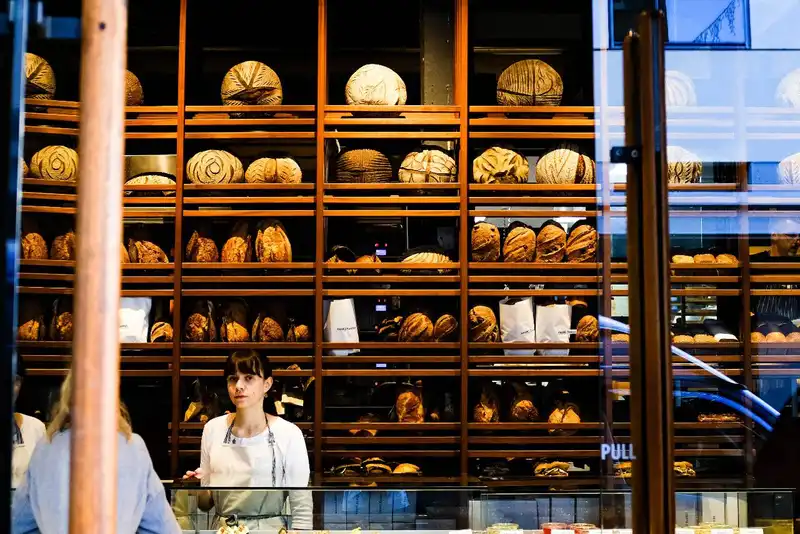6 Tips to Reduce Restaurant Food Waste & Why This Matters
Restaurants commonly contribute to food waste by overbuying ingredients and overproducing food. This is often a result of inaccurately forecasting customers' demands or by ineffectively managing inventory, which both lead to spoilage and unsold goods.
Having to throw away large amounts of food can negatively impact a restaurant's profits, as well as the environment. Many modern restaurants are now taking the steps to minimize their food waste and are implementing better practices to use their excess ingredients.
Why is Food Waste a Major Issue?

According to a 2014 study by the Food Waste Reduction Alliance, American restaurants throw away 84.3% of their unused food, while 14.3% is recycled. Additionally, only 1.4% of the food was donated, even though 17 million households were food-insecure that same year. This means that restaurants could have adopted practices to feed those who do not have access to food, rather than dispose of it in landfills.
The great volume of food that goes to waste each year is estimated to be about 125-160 billion pounds, per reports from the Natural Resources Defense Council. Such large volumes of food waste strain the environment because it wastes the energy and water that was used to grow, transport, and package it. Also, when food is thrown into landfills, it decomposes and increases the production of methane gas, causing further air pollution.
Additionally, the U.S. Department of Agriculture states that supermarkets lose $15 billion each year from unsold produce and vegetables, while restaurants shed $162 billion annually. In order to protect profit margins and the environment, strategies must be implemented to reduce food waste.
6 Tips to Reduce Food Waste
Improving restaurant waste management will not only help executives reduce food costs, but it can also assist in enhancing the business's reputation. Managers can reduce their food waste by implementing these best practices.
1. Conduct Regular Inventory Counts

Regularly monitoring inventory levels will ensure that ingredients are kept at optimal levels. Restaurants can implement modern inventory management software to streamline stock-keeping processes.
For example, inventory solutions with ordering optimization will have suggested ordering features that will help prevent over-ordering.
2. Properly Train Staff
All employees in the restaurant should be properly trained on how to make menu items. This will avert instances of human error, which can lead to food waste. Additionally, there should be standards on the flow of movement in the back of house and front of house.
Many eateries, for instance, establish a circular pathway within the kitchen. With this, staff will be less prone to bump into other employees, which would usually result in food and beverage spills.
3. Change Menu Items or Portions

If customers rarely order a dish, restaurateurs should consider removing it from their menu. Management should also keep an eye out for menu items that have the most leftovers after diners leave. It may be helpful to reduce the portion size or change an ingredient from the dish.
4. Establish a Waste Management Team
Restaurant managers should hire a professional team or assign existing staff with the responsibility of managing the eatery's waste. It is recommended that the teams are well versed in the restaurant's meal preparation processes so they can be familiar with what ingredients the dish needs and how much is used.
The waste management team should monitor how ingredients are utilized and stored, and ensure that established protocols are followed. They should also track and document the amount of waste each day. This will enable management teams to review and assess any trends in their food waste and identify ways to remedy it.
5. Use High-Quality Kitchen Equipment

By using specialized tools and supplies, restaurants can minimize errors in food preparation and processing. For example, investing in a specialized set of knives for produce and another for raw meat will ensure that the products are prepared according to restaurant standards.
Additionally, purchasing a restaurant-grade oven will allow managers to ensure large volumes of products are cooked to the proper temperature.
6. Have a Storage System
Fruits, vegetables, and raw meat products are fragile and have a shorter shelf life. These ingredients must be stored properly to protect their quality. An organized storage system that prioritizes the earliest expiration date will also ensure that staff can identify which product they should use first before it spoils.
Some common storage methods include cleaning and drying produce and vegetables before putting them into separate containers. These containers should be labeled accordingly and be placed in an appropriate space with the correct internal temperature. For example, fresh fruits and vegetables need to be in refrigerators set at 32-55F to maintain their quality.
Food waste is a vital issue that restaurants need to address to protect their bottom line, brand, and consumers. By following these tips, management will be able to reduce their food waste, as well as their ecological footprint.





